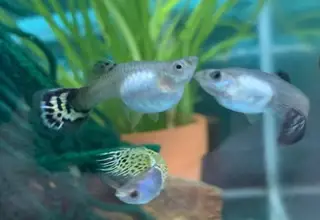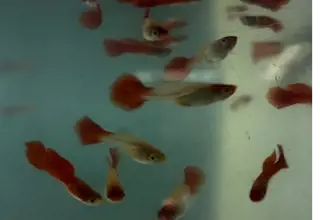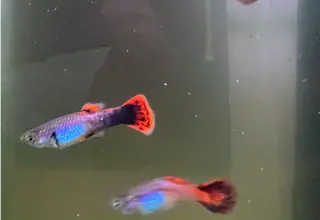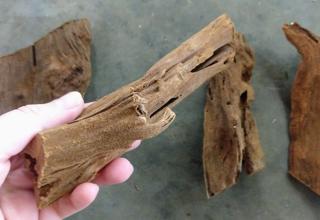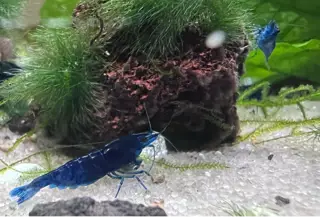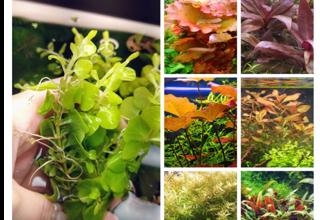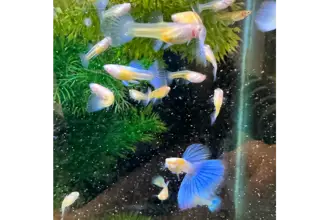Tessalata Eel: Care, Tank Size, Diet & More
Posted by Miles Harrison on 11/09/2022
We use affiliate links and may receive a small commission on purchases.
Massive in size and intimidating in appearance, the Tessalata Eel, or Honeycomb Moray Eel, is a saltwater eel highly prized by aquarists for its unique markings and highly aggressive personality. While some may think these reef-safe fish are difficult to care for, with the proper knowledge, almost anyone can take care of this fascinating species.
In this guide, we’re going to cover a wide range of topics about the Tessalata Eel. We’ll discuss the appropriate tank size, diet, feeding, lifespan, and diseases. We’ll even get into breeding! We’ll touch on all of these topics so that you can decide whether or not these aggressive fish are right for you.
Species Summary
It’s not every day that you will come across a Tessalata Eel (Gymnothorax favagineus) in an aquarium. A common misconception about this species is that they are difficult to care for, making them uncommon. In reality, their care requirements are relatively straightforward, but their minimum required tank size is often the barrier to entry when keeping these fish.
You might be surprised to know that even beginner hobbyists can care for this species. As long as their care requirements are met, they can be incredibly rewarding to house in an aquarium.
These fish have a wide distribution throughout the Indo-Pacific region. They can be found hiding in crevices throughout the eastern coast of Africa, the waters of southern Japan, and the Great Barrier Reef.
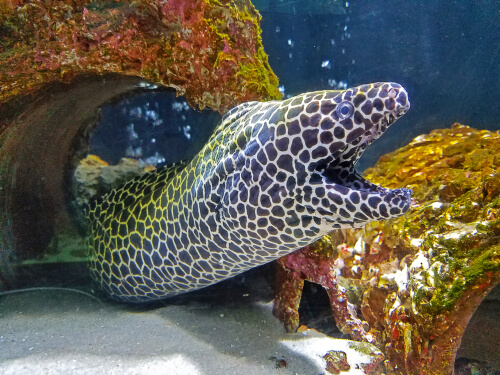
Appearance
The Tessalata Eel can be quite intimidating. Their muscular snake-like appearance and large jaws can be the stuff of nightmares for some hobbyists. But at the end of the day, this fish is no different than most other eel species.
The first thing you’ll notice about this fish is its color pattern. The Tessalata Eel is occasionally referred to as the Honeycomb Moray Eel, and it's quite obvious how it achieved this alternate name. The body of this fish is covered in leathery dark brown honeycomb-like blotches, broken up by white bands. It’s completely covered by this pattern (even the inside of this fish’s mouth is covered in the pattern!) which it uses to camouflage itself while it waits for potential prey to come it's way.
The Tessalata Eel has an elongated dorsal and anal fin, which wraps around the body of the fish, resulting in one continuous fin. They have relatively small eyes, which results in poor eyesight, but they have a unique ability to pump water through their mouths, which enables them to detect both prey and predators. If you look closely, you’ll be able to see small circular gills near their mouths, which they force water through to allow them to breathe. These fish have limited stability, as they lack pectoral fins, but their thin body allows them to swim into narrow spaces to hunt for prey.
They have large teeth, and the tooth size can be used to differentiate between male and female eels. Males will typically have longer teeth with serrated edges. As these fish mature, they will change into females, but some are capable of being both male and female at the same time.
Size
The Tessalata Eel is a large fish and can grow to reach up to 6 feet. This size is typical when kept in captivity, as well as in the wild.
You can improve the chances that these fish will reach their full adult length, by providing them with a nutrient-rich diet, and a comfortable environment to live in. Stress and poor water quality can dramatically affect the quality of life and overall size of this fish.
Tessalata Eel Care
If you’re new to fish keeping, you might be surprised to know that it’s possible to keep Eels in an at-home aquarium. With the proper knowledge, you can recreate the conditions of their natural habitats, allowing them to live a full and well-cared-for life.
You’ll always want to give your best effort when caring for a species like the Tessalata Eel. There’s plenty that can go wrong, so we’re going to cover all of their requirements so that you’ll be well-versed in this species.
After a transition period of about a week, you'll be surprised at how active and entertaining this fish can be. However, you need to be incredibly cautious when taking care of this species. Bites from their razor-sharp teeth can be incredibly painful.
Tank Size
The Tessalata Eel requires an aquarium that’s at least 180 gallons. That’s right, this 6-foot-long Eel requires a massive tank! As long as your tank is big enough, you can even house multiple eels.
Having a large aquarium will reduce the chance of any territorial disputes, something that’s incredibly important when dealing with large aggressive fish species. These fish can be kept alone, in a pair, or in a group, as long as you have a massive aquarium, you have plenty of options to choose from when considering this species.
Lifespan
Given a well-balanced diet, the Tessalata Eel should live for up to 15 years in captivity . In the wild, these fish can live even longer and have been documented to live for up to 30 years.
Diet, water conditions, and reduced stress are some of the most important factors in determining the duration of a Tessalata Eel’s life. Before purchasing this eel, make sure to inquire about the fish’s age so that you can formulate an accurate prediction of the fish’s life expectancy.
Water Conditions
Tessalata Eels should have no trouble adapting to an established aquarium. As long as you have a tank that’s big enough, these eels should show their personalities after a one-week transition period.
If you’re setting up a new tank, you’ll want the tank to be established for at least a month before introducing a Tessalata Eel. If you’re in a hurry, you can speed up the process by adding a bacteria kickstarter, like Brightwell Aquatics's MicroBacter.
You’ll want to maintain the following water conditions if you plan on caring for a Tessalata Eel
Temperature Range: 72°F-78°F
pH Range: 8.1-8.4
KH: 8-12 DKH
Specific Gravity: 1.020-1.025
Frequently test your water parameters with a reliable test kit to make sure these levels remain consistent. Luckily, Tessalata Eels are incredibly resilient, so you won’t need to worry if things go awry for a brief period of time.
Tank Setup
In the wild, Tessalata Eels often hide in small crevices. Since they aren’t the best swimmers, they prefer to wait for prey to come their way. Once a potential victim swims in front of a Tessalata Eel, they will quickly lunge at the potential food source. This behavior can be seen in a home aquarium, but you’ll want to provide plenty of hiding spots for your Tessalata Eel.
It’s best if you set up your tank properly before introducing a Tessalata Eel. This will make things much easier, as you won’t have to worry about getting bitten. You’ll want to purchase plenty of live rock, and you can position the live rock to create small caves and caverns.
While some aquarists recommend PVC pipes as hideouts for eels, we recommend avoiding PVC pipes altogether if you plan on keeping a Tessalata Eel. Although a PVC pipe will be suitable for a juvenile Tessalata, this eel will quickly outgrow the common sizes sold at hardware stores.
If you’d like, you can add corals, as these fish are considered reef-safe. However, due to their large size, they may knock over your corals. Consider positioning coral in locations that won’t easily be bumped by your eel.
Although these fish aren’t as active compared to other saltwater fish, such as the Pink-Streaked Wrasse or Snowflake Clownfish, you’ll still want to have some open space for these fish to swim throughout.
Purchasing an appropriate filter rated for your aquarium is essential. Since these fish are quite large they will generate much more waste than other species like the Kole Yellow Eye Tang. When combined with a protein skimmer and regular water changes, you can create an easy-to-maintain environment for your Tessalata.
Since these fish can bite, you must be cautious when performing cleanings or repositioning hardscape. Regular maintenance can be performed with a gravel vac, and the glass can be cleaned with a mag float .
These fish are known to try and escape tanks, so a tight-fitting lid is an absolute must for a Tessalata Eel. We even recommend keeping the lid on as best as you can when performing regular maintenance. These fish can strike quickly and it’s in your best interest to always be extra cautious when housing one of these fish.
Common Diseases
While many saltwater fish are vulnerable to diseases, Tessalata Eels are incredibly hardy, and rarely get afflicted by parasites or diseases in an aquarium setting. It’s rumored that their mucous-covered skin makes them highly resistant to disease. However, this doesn’t make them completely immune to everything, and one potential disease they may face is known as Marine velvet disease.
Occasionally referred to as gold dust disease, marine velvet disease can quickly get out of control, resulting in serious illness or death. This parasitic infection can attack the skin and lungs of an infected fish, ultimately disrupting the flow of oxygen across the fish’s gills.
Symptoms typically include heavy breathing, lethargy, and small gold lesions that appear on the body of the fish.
Treatment typically involves quarantining the fish and adding small amounts of copper. You’ll want to keep levels of copper between 0.15ppm-0.2ppm for 14 days. You should start to see improvements in your fish after this period, and once cured they can be moved from the quarantine tank back into your display tank. Aquarists have also had success dosing Rally PRO .
So what exactly causes marine velvet disease? Stress is the leading cause, so you’ll want to make sure that your fish has plenty of space to claim as their territory. Water conditions should always remain optimal and consistent. The disease tends to appear when new fish are introduced to an aquarium, so make sure you monitor and examine any new tank inhabitants.
Prevention is always the best treatment, so always monitor your aquarium with an accurate test kit. Reducing stress and a proper diet will strengthen your fish’s immune system, giving them the best chance at fighting diseases and parasites.

Food & Diet
Adult Tessalata Eels should be fed at least once a week. Young Tessalata Eels will need more frequent feedings and should be fed at least once every 2-3 days.
Tessalata Eels have specific dietary requirements that you should be aware of. The Tessalata Eel will consume squid, octopus, large feeder fish, live/frozen fish, calamari, shrimp, and mussels. Salmon and tuna are great options, as these fish will greatly benefit from the fats provided by these fish. The shells of invertebrates are a great source of nutrition, and Mussels provide a substantial amount of vitamin B, a common deficiency in eels.
Behavior and Temperament
Tessalata Eels are highly aggressive, even when compared with other Moray Eels, the Tessalata Eel remains one of the most aggressive in its scientific family. These fish will attempt to consume almost anything present in their aquarium. They will even strike at their owners if given the opportunity. Always be extremely cautious when attempting to service an aquarium that houses a Tessalata Eel.
Personality-wise, the Tessalata Eel is fascinating to observe. These fish will be dormant most of the time, dwelling in hiding spots they’ve claimed throughout the aquarium. When it comes feeding time, they will emerge from their hideouts and quickly devour any available food. Occasionally, they will swim around the tank but can typically be found along the aquarium substrate.
Their snake-like movements might appear intimidating, and rightfully so, as these fish will be the centerpiece in most saltwater aquariums.
Tank Mates
Due to their aggressive nature, you’re very limited when it comes to tank mates. These fish will attempt to eat almost anything you introduce to the aquarium. An exception would be other Tessalata Eels. If you have a massive aquarium, these fish are capable of co-existing. Just make sure there are enough hiding spots for these eels.
Without question, you’ll want to avoid adding the following saltwater fish:
- Orange Spotted Gobies
- Snowflake Clownfish
- Pink-Streaked Wrasse
- Pink Skunk Clownfish
- Kole Yellow Eye Tang
- Japanese Snapping Shrimp
Nano reef fish should also be avoided at all costs. The last thing you’ll want is to have another one of your aquarium fish become a snack for your Tessalata Eel.
Breeding
Unfortunately, there have been no documented successful breeding attempts for the Tessalata Eel. Almost all Tessalata eels are wild-caught, but there might be some hope for these fish to eventually be bred in captivity.
In 2014, a related Moray Eel was successfully bred in captivity at the Zoo Vienna Schonbrunn in Austria. Paving the path for a future of captive-bred eels.
In Conclusion
As you can see, there is a lot of responsibility that comes with owning a Tessalata Eel. These rare fish come with their own set of unique challenges. But aquarists well-versed in their care should have little-to-no issues when housing this species, just be sure to always follow best practices when it comes to safety.
So now that you’ve learned about all of the ins and outs, do you think this fish is right for you? Let us know what you think by visiting our community forum where you can post feedback and discuss anything related to fish keeping.
December's Giveaways on Light Fish
